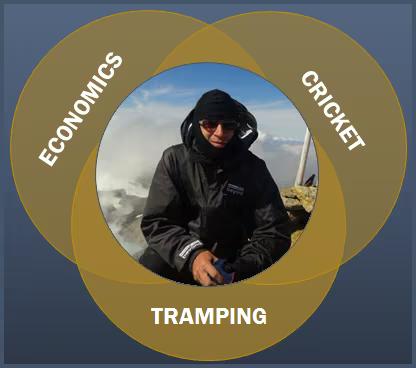
A day in the life of an economist – Gareth Kiernan
With the recent Brexit vote creating waves around the world, it is likely that Michael Gove, one of the leaders of the Leave campaign, is rethinking his comments before the vote. He was asked why he should be trusted over the overwhelming list of economists and international authorities who opposed Brexit, to which he retorted “People in this country have had enough of experts.”
While most would agree that experts can be wrong, I imagine there are many UK citizens who wish they had paid more attention when they had a chance. On this note we continue our article series “A day in the life of an economist” by having a chat with Gareth Kiernan. Gareth is Infometrics Chief Forecaster and brings a considerable wealth of knowledge and expertise of the financial markets and the construction industry to Infometrics forecasts.
Bio – Gareth Kiernan
Studied at: University of Canterbury (MCom (Hons) in Economics, BSc in Economics and Statistics)
Resides in: Wellington
Jacqui: Can you describe a typical day at work?
Gareth: One of the great things about my job is that a typical day is hard to define – about the only typical feature of my day is that I’ll be sitting at my computer for the bulk of it, unless I’m out and about visiting clients or giving presentations. But if I’m at my desk, I could be researching or reading into background issues affecting the property market, analysing and writing about the latest piece of economic data that’s been published, building new statistical models to enhance our forecast capabilities, or preparing new forecasts to inform clients about the outlook for their business or organisation is changing.
JC: How do economic and sector-specific forecasts help in business/government decision making?
GK: I remember for a while after I graduated and started at Infometrics, I found it hard to comprehend how people could rely on these numbers that I’d “made up” to do their planning! Over time I’ve recognised that my knowledge of economic relationships and interactions is valuable for predicting how building activity, for example, is going to evolve in coming years. And with 17 years’ experience of forecasting the economy, I’ve seen a few ups and downs during that time as well.
Our forecasts enable businesses to plan their employment and investment decisions to better align with future demand, and set sales targets and budgets that are realistic given the economic conditions they face. We also aim to highlight key trends or issues that we see potentially affecting future activity, providing businesses with information that enables contingency planning against negative shocks, or points out areas in the market where new opportunities might be opening up.
JC: What do you take into account when predicting future trends of the New Zealand economy and its sectors?
GK: Historical relationships are the starting point – but they need to be relationships that we can logically explain. It’s a bit hard to sell a story that there is going to be more commercial building activity because petrol prices have fallen, for example! We’ll do a check for major external influences that could temporarily knock the normal relationships about – international economic events, significant government policy changes, or natural events such as a drought. Having started with those building blocks, it’s a case of overlaying them with our interpretation of the latest indicators and judgment as to how this economic cycle might be the same as, or different from, previous cycles. We need to have a strong conviction in our own forecast numbers and the story behind them, so judgment is a key component to make sure that we’re presenting clients with a credible outlook that they can have confidence in.
JC: What is the most interesting highlight of the July forecasts?
GK: We’re forecasting new residential consent numbers to climb above 40,000pa in 2018. That level of activity would be the highest level ever. I remember the residential building boom in 2003/04, when we reached 33,000 new dwellings, seemed phenomenal at the time. The simple truth is that Auckland’s undersupply of housing, combined with the country’s persistently strong population growth, mean a massive response is necessary. It remains to be seen whether the construction sector can lift activity to that degree. Forecasting something that lies outside the bounds of what has ever been seen previously always makes me slightly nervous!
JC: What do you enjoy doing when you’re not at work?
GK: Cricket is a passion of mine – I love watching the game when I get a chance, once upon a time I used to umpire club cricket, and there’s always plenty of statistics to compile or analyse (as if economics wasn’t enough!). Over the last few years I’ve got back into a bit of tramping with my oldest son, with highlights being getting to the top of Mt Taranaki and Mt Ruapehu. Other than that, I enjoy getting out with the kids and sharing fun and new experiences with them, or getting to sit down with a glass of red wine and watch a good movie.
JC: What is an intriguing fact about you?
GK: I spent the first few months of my life in hospital because I weighed less than three pounds when I was born. At the time, that weight was right on the cusp of survival.
JC: Thank you Gareth, for taking the time to give us some insight into the many aspects that makes up your field of expertise.


























